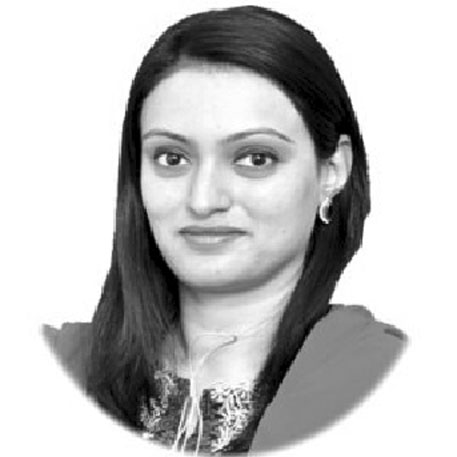The Gwadar odyssey
GWADAR is a Balochi word which means ‘The Door of Wind’. Though located in the south western coast of Balochistan, the area is located on the convergence of three strategically important zones of the world where on one side is oil-rich Middle East, Central Asia with surplus natural resources and South Asia having greater economic potential.
Gwadar is situated on a natural hammer-head shape tombolo peninsula forming two almost perfect, but naturally curved, semi-circular bays on either side.
Gwadar being located at one of the most important strategic sites is full of scenic beauty where nature speaks to one through fantastic amalgamation of proud muddy hills and blue serene water.
This ecstatic piece of land has over the period of time witnessed some important events. It has been visited by Alexander the Great and Muhammed Bin Qasim during advances to complete their expeditions. Portuguese also stayed here for a brief period and in fact named the protruding earth mass as Hammerhead due to its peculiar shape.
During Kalat dynasty one of the Khans gifted this piece of land to Saiad Sultan, the defeated prince of Oman, who had fled to this area. He married Sultan’s daughter and was blessed with Gwadar for their living.
It was with the understanding that the piece of land would be returned once the Prince regained his crown, which he did but the territory wasn’t returned.
Historically before recognizing Gwadar as part of Pakistan, area was in possession of Oman from 1783 to 1958.
While the strategic value of this location as a deep water port was identified by the United States Geological Survey when the territory was still under Omani rule. Pakistan bought the area of Gwadar from Oman while the Oman previously was also under British rule.
British had concluded an agreement with the Sultan of Oman on March 20, 1891 in which the final pledge was, “never to cede, sell, mortgage or otherwise give in occupation any of his dominions or dependencies to the British government”. However, the Pakistani Government continued to raise the issue with the British.
In 1958, after learning that the Indians are also trying to acquire Gwadar land, the Government of Pakistan intensified its efforts and succeeded in concluding an agreement with the British Government on August 1, 1958.
To fulfil the wishes of Gwadaris, Pakistan decided to purchase Gwadar back from Sultan of Oman at a cost of $3M. Gwadar at that time was a remote locality with access only via sea or air.
On 8th of December 1958, it was decided to physically take over Gwadar from Sultanate of Oman and Pakistan Navy was tasked to do it on behalf of Government of Pakistan.
A naval platoon led by Lt Iftikhar Ahmed Sirohey landed on the shores of Gwadar and hoisted Pakistani flag for the first time.
This was the first engagement between Pakistan Navy and Gwadar which lasts till date. Lt Sirohey later rose to the rank of Admiral and became Chief of the Naval Staff as well as Chairman Joint Chiefs of Staff Committee.
Hence, Gwadar Day is celebrated on 08 December every year to mark the annexation of Gwadar with Pakistan in 1958.
Realizing the potentials the area of Gwadar offers and its capacity for construction of another deep sea port after Karachi Port and Port Qasim, the work on its development is being carried out with ace.
The port under construction at Gwadar is owned by Pakistan government’s Gwadar Port Authority and operated by state-run Chinese firm China Overseas Port Holding Company (COPHC).
Being a deep sea port, having warm waters, shortest sea route, throughout the year availability and strategic location, Gwadar is considered as a gateway and hub of all commercial and trade activities which is going to further generate business ventures.
Hence, Gwadar is always referred as future economic hub of Pakistan, where presence of Special Economic Zone, transit trade and industrial complexes will bring huge chunk for Pakistan’s economy.
Generally speaking, the area of Gwadar in the past remained deprived of basic necessities of life and livelihood of a common local is dependent on fish catching, now the fisher folk also hope for better future with the advent of Gwadar port.
It is pertinent to mention that Pakistan Navy has done and still doing remarkable work for the better upbringing of locals.
Apart from establishing schools, hospitals, infrastructure and provision of other socio-economic uplift programmes for locals, it is trying to ensure safety of marine life and coastal environment for future generations.
Pakistan Navy not only welcomes outsiders but it is busy in creating healthy learning environment for natives through sports galas, national days, festivals and many other activities to cherish civil-military relationship and create harmony, integration and cohesiveness among many local communities.
Gwadar features heavily in CPEC, and is also envisaged to be the link between OBOR and maritime silk route. The future of better and prosperous Gwadar is not far and it becomes responsibility of all Pakistanis to realize the potential our land holds for us.
Particularly, in era of 5th generation warfare, we must not let our foes exploit our assets by giving impression of confusion and division within state.
As CPEC project is considered as a win-win model, therefore enhancement of cooperation should not be politics or system bound and continue to work towards integrated regional connectivity and countrywide evolution with congruence and progress.
—The writer works at the Institute of Regional Studies, Islamabad.









